Herbs and spices help us to enrich our daily cooking routines.
They can help us to turn regular recipes into hot, warming, aromatic, and even exotic dishes. And they can offer various health benefits as well.
Besides the common herbs that we know and use regularly – like basil, rosemary, and thyme – there is another plant with mostly unknown but strong seasoning powers.

It’s lavender.
From insect repellent in the garden and an aromatic bath essence to both sweet and savory applications in the kitchen, there are so many excellent uses for this versatile herb. Starting with a little background on the history of lavender, let’s take a look at how you can start using your own homegrown lavender in a panoply of stress-reducing, energizing, and super flavorful ways.
A little blossom background
Beloved for its wonderful smell and color, it is more than just a lovely flower. You can use this blooming plant in the kitchen, too, and its intense flavor makes for excellent, super creative meals.
The pretty plant has its origin in coastal areas of the Mediterranean region. A popular spot to find it growing is in the famous French fields of Provence, where thousands upon thousands of flowers turn the whole landscape into a blooming purple sea.
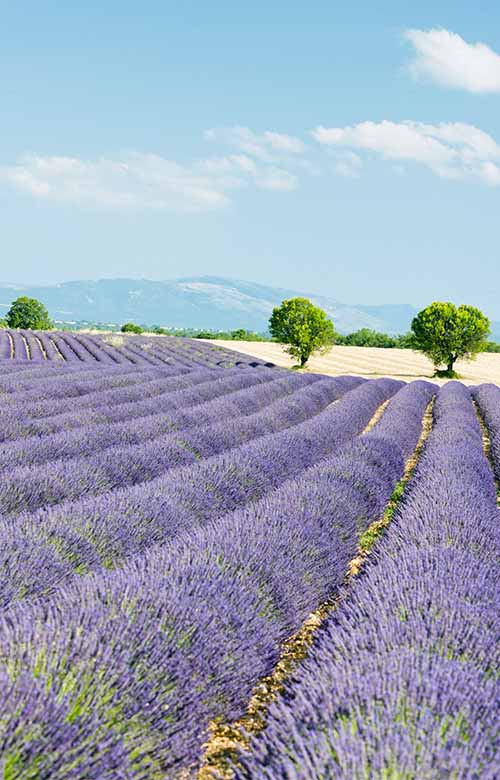
Even the Romans made use of its aromatic scent, for bathing. Reference to this ancient practice is actually found in the name – the word lavender can be traced back to the Latin expression for washing, or “lavare.”
Handy in the garden and household
Lavender is a wonderful plant to add to your herb garden or flower bed. It not only smells fantastic and looks amazing, with its vibrant violet color when in full bloom, it actually can be pretty handy to have around.
As the plant enjoys the reputation of keeping away aphids, it is one of the best partners that beautiful roses could ask for. Plus, both are addicted to the sun, and they make a fantastic, colorful couple in the garden.
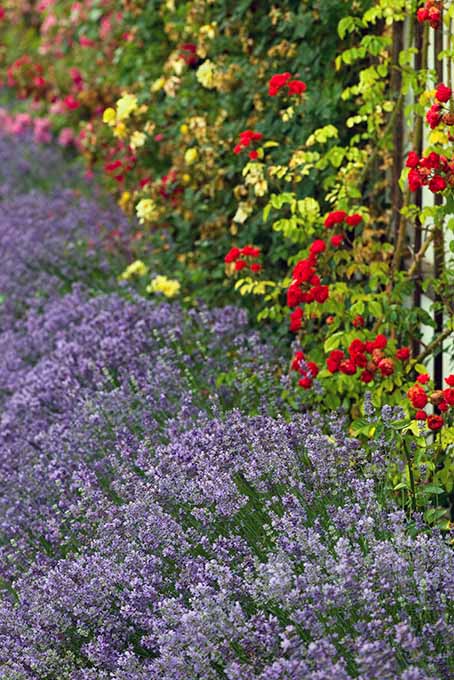
You may also use lavender plants as natural borders to surround your flower beds. They will definitely catch everyone’s attention, spreading a heavenly scent all around.
In the house, there are several additional possibilities for using lavender:
- A small fragrance bag in your closet is going to help with keeping away moths and mites. But even if you’re without these common pests (lucky you!), you can still place little sachets in storage areas to add a fresh, floral scent.
- The antibacterial effect of the plant is useful for many purposes. Even trash bags can be scented with it to eliminate the unpleasant odors and bacteria that are associated with our daily kitchen waste.
Consider this when using essential oils
In general, essential oils are very concentrated and they can have an irritating effect on the body, especially our sensitive mucous membranes. Lavender essential oil is no exception.
Remember never to cook with any bottled essential oils unless they are food grade, deemed safe for ingestion. For more on cooking with essential oils, check out Julie Workman’s article here.

There are certain side effects associated with this highly scented compound to consider prior to external use as well:
- Skin rashes or irritation can occur when your skin is in contact with lavender oil.
- Small children in particular can have strong allergic reactions, so one should not apply the oil directly to a child’s skin or let them inhale it.
- Do not apply lavender essential oil to open wounds.
- Keep in mind that herbal ingredients and scents may have an influence on your alertness or reaction time. The intense aroma of lavender may make you feel drowsy, potentially slowing down your reactions and reflexes.

This must be taken seriously – it is not advisable to drive or operate machinery when using this potent essential oil.
When using lavender oil at home for health and well-being, it is important to pay close attention to its quality. The variety that you purchase should be untreated, made without synthetic chemicals and consisting of pure plant extracts only.
Indulge in a relaxing dip
This indulgent bath additive will help you to calm down and relax.
- In a pot, bring 2-3 tablespoons dried lavender blossoms to a boil in approximately 4 cups of water.
- Put a lid on the pot, turn off the heat, and infuse for approximately 10 minutes.
- Filter the blossoms out of the liquid, and add the essence to your warm bath water.
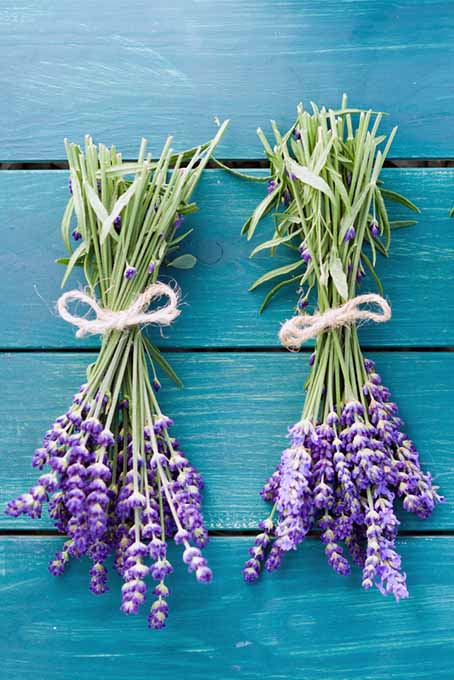
Kitchen uses, both fresh and dried
One might think the taste of a flower would somehow be sweet, because the bright colors and the beautiful floral scent imply this.
But lavender tastes different. It has a spicy, slightly bitter flavor that can be compared to rosemary.
However, there’s no need to be skeptical! Trust me – you’re going to want to give this a try.
The perfect way to test it out for the first time is to adapt a recipe that is made with rosemary. As the herbs have a similar flavor profile, simply try substituting one for the other.
Do you like the flavor of Mediterranean seasonings already? If you have a bottle or package of herbes de Provence in your spice rack, take a close look at the ingredients. I bet you’ll find some lavender in there.
Surprised? Although the plant is not actually a traditional part of the blend in its home country France, it is sometimes added to commercially available versions of this popular combination nonetheless.
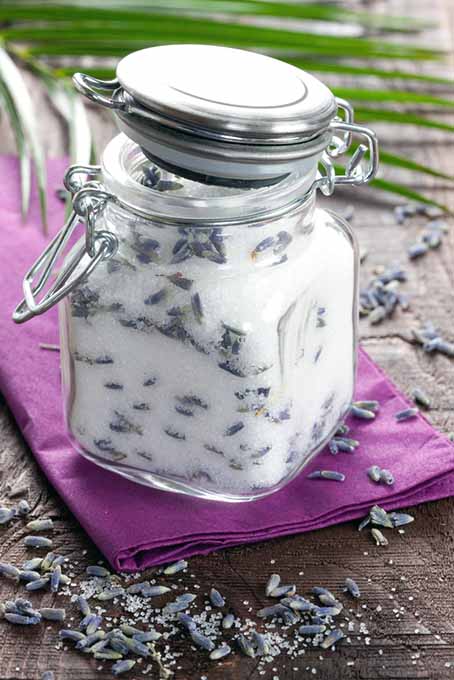
To boost your creativity and give you some additional ideas for what to do with this purple plant in the kitchen, here are some tips for you:
- Jazz up your regular lemon drizzle cake with some lavender. Add 1 tablespoon dried blossoms to the dough, and sprinkle a few crumbled buds on top of the icing just before serving.
- Use a few teaspoons of dried lavender to make our aromatic lavender cookies.
- If you’re afraid of over seasoning baked goodies with pure lavender, try a more subtle version instead – and infuse your sugar with some blossoms. This approach is comparable to making your own vanilla sugar.
- As the flower lends itself well to savory dishes, too, lavender salt can be prepared as easily as flavored sugar, using the same method.
A final note: If you’re planning to make your own sugar or salt, be sure to use organic blossoms, or ones that were grown in your own garden. Flowers from gardening centers have often been sprayed or treated with pesticides or herbicides, and should only be used for decorative purposes.
Oh, and if it turns out that you don’t like the flavor? That’s okay, at least you tried!
There are still plenty of other herbs and spices out there, to liven up your cooking. Take a look at our list of 10 basics that everyone should have in their pantry.
What other foods can you combine it with?
Here’s a list of some of the best pairings, to get you started:
| Sweet | Savory |
|---|---|
| Oranges and lemons | White fish |
| Apricots and peaches | Pork |
| Pears | Lamb |
| Cream desserts (e.g. panna cotta, creme brulee, rice pudding) | Chicken, duck |
| Honey | Mediterranean vegetables (e.g. fennel, bell peppers, zucchini) |
| Red berries (strawberries raspberries) | Green salads |
| Sauces, dressings, marinades |
What else should you keep in mind?
When it comes to adding intense spices like this to your meals, there is one simple rule to follow: less is more.
As it has a strong flavor, remember to season carefully. Otherwise, the aroma will dominate the whole dish, providing a perfume-like taste with added bitter notes – and nobody wants that.
Finally, dried lavender has a more intense, concentrated flavor than the fresh blossoms. Approximately 1 tablespoon of dried blossoms is equivalent to 2-3 tablespoons fresh.
DIY Drying
The best thing about growing lavender in your own garden at home is that you can dry the blooms, to save up a stash for use throughout the rest of the year.
When you want to make tea out of your crop or cook with it, try to use Lavandula angustifolia. When drying plants for decorative purposes, any sort will do.
Here’s how you can do it yourself:
- As soon as the undermost blossoms have opened, cut some bunches together with their stems. The ideal time to dry lavender is right before the plant fully comes into bloom, because this is when it contains the most essential oils. Pick the blossoms by hand, or cut stems approximately 4 inches below the panicle.
- Tie the stems together with a string and hang the bundles, with the blossoms facing downwards, for drying.
- When hanging them to dry, make sure there is sufficient space between the individual bunches for air circulation. Spread a a cloth out beneath them, to catch any buds that may fall off.
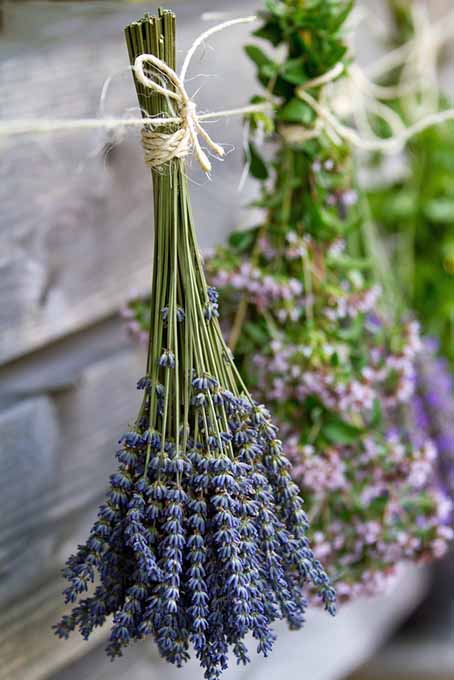
Hang bunched flowers in a dry and dark place with warm, circulating air. It’s important to keep these out of direct sunlight, because a significant quantity of the essential oils will be lost at temperatures above 40°C/104°F. Trying to achieve the desired conditions in an oven is not recommended at all.
You’ll know the drying process is complete when the blossoms can be removed from the stems easily. With optimal conditions, this may take 7-10 days.
Before using the lavender for anything else, it needs to be dried completely. Otherwise, mold can form, and then you’ll need to toss the whole bunch.
Store the dried blossoms in a screw-top glass jar, not in anything potentially reactive like plastic or metal.
Using the same process, you can actually dry all kinds of herbs for later use. Click here for more information from Foodal on how to preserve your own herbs.
Effects and everyday uses
The scent of lavender works in multiple ways, having both a calming and an activating effect:

Because of this diversity, the plant is suitable to help us in various situations.
The beauty and cosmetic industries have already discovered the numerous advantages of this herb, and it is added to many different products. If you keep your eyes open, you will find many more items that utilize it as a natural active substance.
These include:
- Hair and skin care (especially for oily types)
- Insect/mosquito bites and stings (anti-itch and anti-inflammatory)
- Wound healing, skin irritation and itching (antibacterial, antiviral, antifungal, anti-inflammatory)
- Wellness (aromatherapy, bathing, fragrance lamps and essential oil diffusers, soaps, tea
- Cleaning detergents (for disinfection of surfaces)

Make your own tea
When you have dried the blossoms successfully and placed them in a dry, airtight container for storage, be sure to keep the jar in a dark, cool place, away from direct sunlight.
For herbal teas containing this soothing herb, it’s important to consider the water temperature. It mustn’t boil, because this would destroy some of the active ingredients.
Lavender can make a nice addition to caffeinated teas as well. Read Foodal’s Introduction to Tea for a primer on the subject.
Make your own relaxation-inducing brew using the following method. And feel free to get creative with your own natural tisane blends, incorporating other dried herbs, and flowers like roses and chamomile.
- Measure 1 teaspoon dried lavender blossoms per mug, and place in a tea ball or teapot.
- Heat up your water to 80°C/176°F, and pour over the dried buds.
- Infuse for 3-5 minutes, depending on desired intensity.
- Strain and serve, on its own or sweetened with a little local honey.
What about you? Do you enjoy the smell of this wonderful flower in your products? Have you ever tried cooking or baking with lavender? Share your experiences and thoughts with us.
Are you a gardener? If so, be sure to check our our lavender growing guide at our sister site, Gardener’s Path.
The staff at Foodal are not medical professionals and this article should not be construed as medical advice. Foodal and Ask the Experts, LLC assume no liability for the use or misuse of the material presented above. Always consult with a medical professional before changing your diet, or using supplements or manufactured or natural medications.
Photo credit: Shutterstock.
About Nina-Kristin Isensee
Nina lives in Iserlohn, Germany and holds an MA in Art History (Medieval and Renaissance Studies). She is currently working as a freelance writer in various fields. She enjoys travel, photography, cooking, and baking. Nina tries to cook from scratch every day when she has the time and enjoys trying out new spices and ingredients, as well as surprising her family with new cake creations.


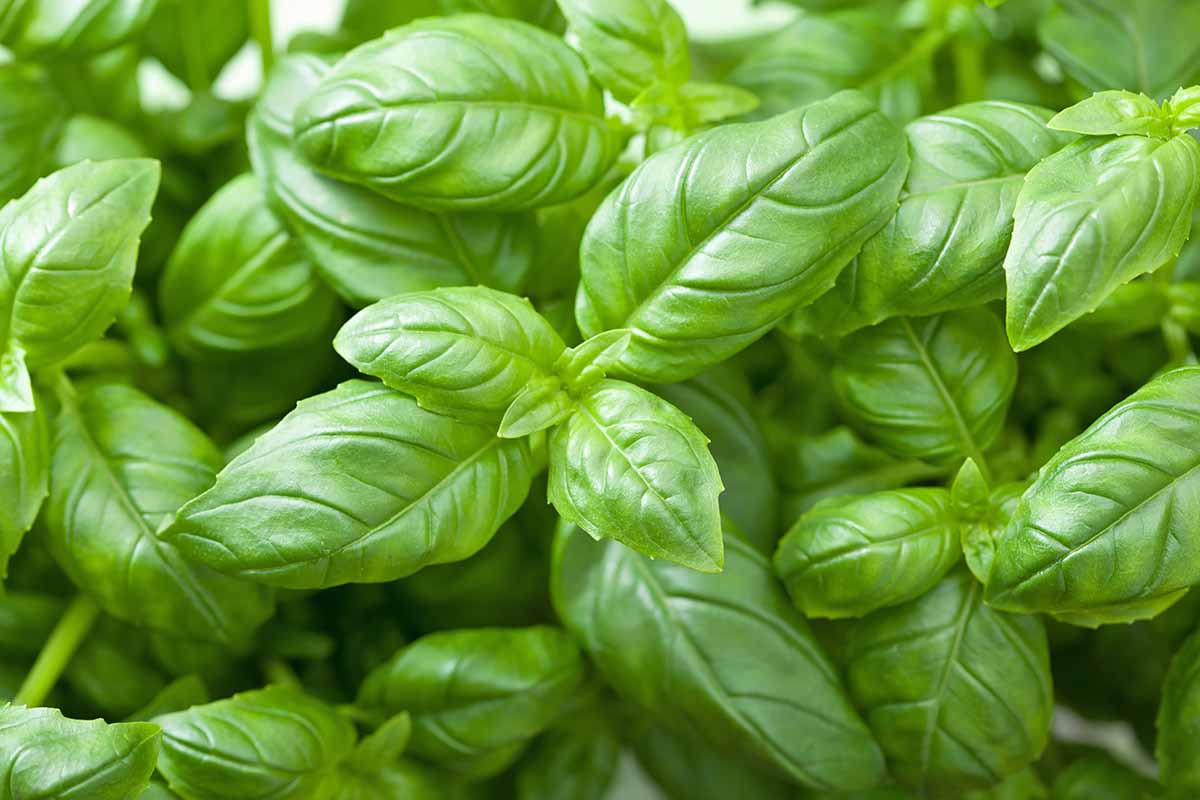
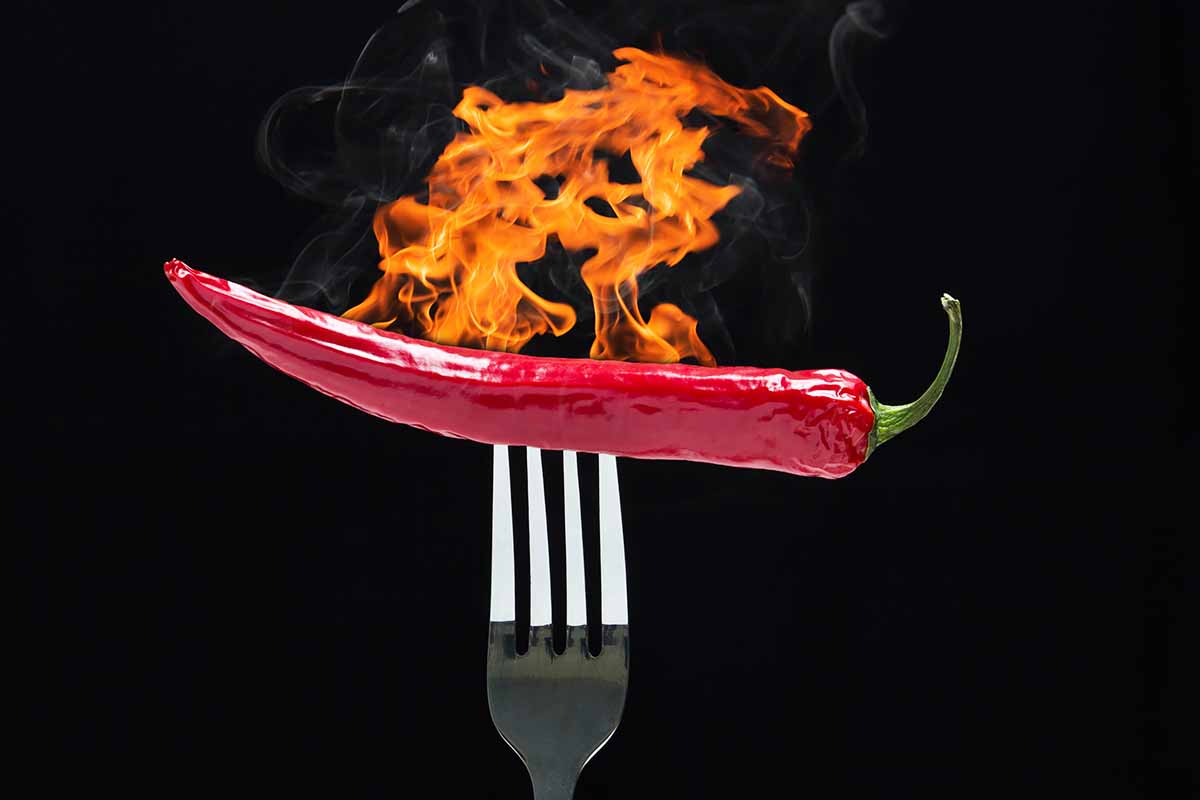
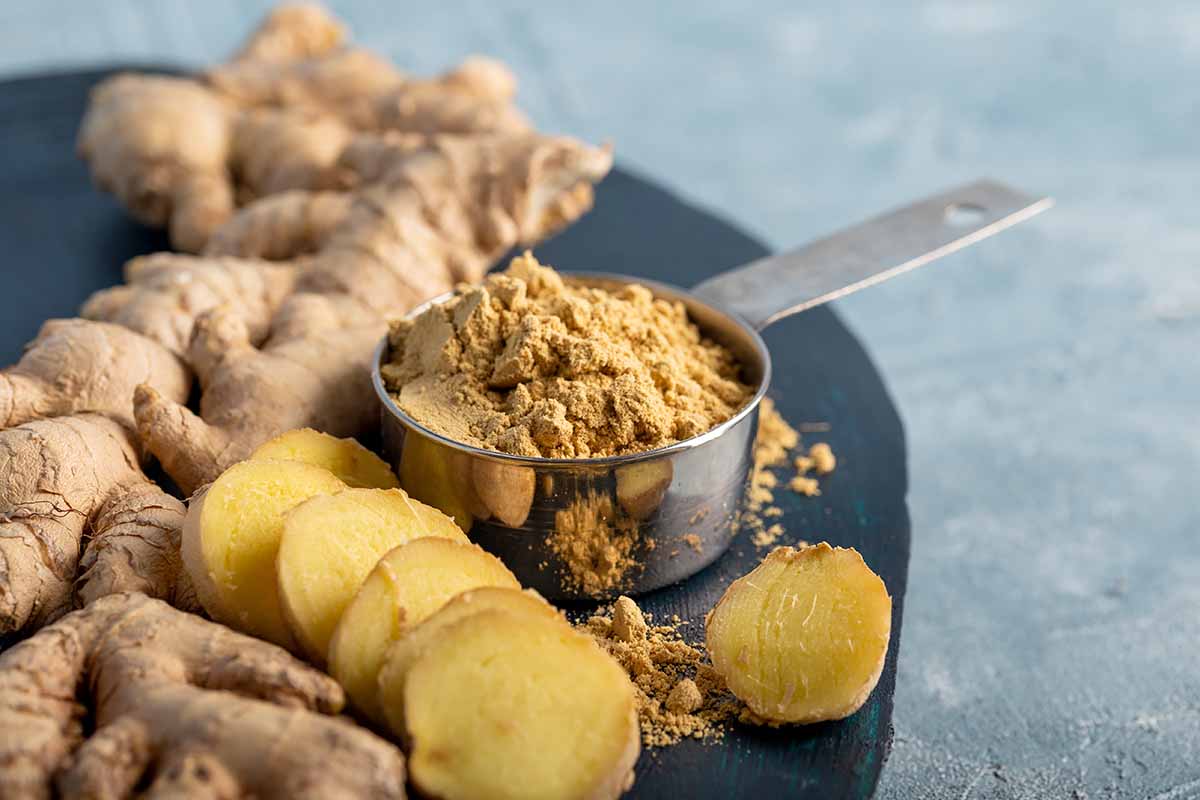
Wow, I never knew that lavender can be eaten and used in baking and cooking! I’m definitely going to make some of that scented sugar, I love baking and it sounds like a really special touch. I like that it goes well with lemon, too, that’s one of my favourite flavors for baked goods 🙂
If you enjoy being creative in the kitchen, it is one thing that’s worth to try! Especially the sugar variety is something that provides you with a little twist that’s not too strong yet. I really like add some lavender to my lemon cake, it is wonderful!
I was first introduced to the idea of edible lavender in one of the episodes of “Bizarre Foods” with Andrew Zimmern a few years ago. I never gave it much more thought until I’ve read this article. I have had lavender tea and it was rather nice. Takes a little getting used to.
However, I’m so paranoid that I will add too much in my meals and end up with soap flavored meals. Putting that aside I never knew that it acted as an insect repellent as well as an antibacterial. Nature is awesome! I shall endeavor to try this as soon as I can, if even to have it as a aromatherapy.
Thank you.
I agree with you that its flavor, as in the tea variety, is quite unusual. I’m sure some people would prefer other herbal infusions.
So, if you liked the tea, you should really try seasoning with it. However, I also tended to use too much, but I figured out using the right quantity now. But, as you say, even if you’re not cooking with it, there are many other useful purposes, too!
With the kick off of gardening season in my area, I’ve been looking to add this herb in my garden this year. I want to add a nice pop of color to my herb garden and lavender is definitely on my radar.
It will be a wonderful addition, I can tell you that. When you’re planting them, you should consider drying some bunches, too. This way, you can benefit from its wonderful scent in many other ways 🙂
I never knew that you could use it for more than just fragrances and such. You learn something new everyday! It sounds like a sweet substitute for rosemary (that was mentioned in the post) so I think I should try it sometime. Actually, the lavender tea sounds pretty awesome and probably would taste good on a cold day!
Exactly, replacing rosemary with it, is especially a good idea when you’re trying lavender for the first time, as they have a similar flavor nuance.
And the tea works great for relaxation and warming up on a cool day. Cold temperatures are still present in Germany (right now -3°C / 26°F), so I think I’m going for a cup these days 😉
Lavender is beautiful. While I’ve never used it for cooking, I have pots of it in my garden and I love to watch it bloom, smell the scent and watch the bees feed from the flowers. As our honey bees are in decline, I think we have to do whatever we can to help them recover and thrive.
You are so right about this, I also think that growing bee-feeding plants is something everyone can do to contribute. Recently, my partner and I bought one of those insect hotels! I’m excited to see how this develops and who is going to move into 😉
I’ve always loved the smell of lavender… When I was a kid, I had perfumes that smelled like it. I liked to sniff it before going to sleep. It helped me calm down. I never ate it, though!
I feel that it will be extremely useful this summer with mosquito bites…
Smelling lavender to get to sleep is something I like to do, too. I own a product called “pillow spray” which consists of natural lavendes essence. This is really wonderful and I enjoy going to bed being surrounded by a sublte, fresh scent of the plant.
And when you’ve got some blossoms to spare, try to jazz up some summer salads or desserts with them. It is really worth it.
I have always loved the scent of lavender, and have grown it in my garden in the past as a protector to my tomato plants. I never once considered using it in the kitchen! I love incorporating fresh herbs into my recipes, your post has inspired me to grow lavender again this year. I cannot wait to try it with some pork or chicken dishes! Thank you for the inspiration!
That’s great to hear! I’m happy that you consider using it in the kitchen, it is really wonderful to combine with such meat. I’m sure you’ll like it 🙂
Thank you for this reminder of what is to come! Most of my life I lived in the cold centre part of Canada and moved to Vancouver Island off the West Coast of British Columbia about ten years ago, so I am now able to plant lavender and have it come up year after year. Not only is it a great insect repellent for the people who tend it, but it is one of those plants that never has any insect bites or chews anywhere on it– insects don’t like it (except for bees, who love it of course!) I think I will brave some tea this year– I have thought about doing that for a long time but keep forgetting!
Indeed, I’m also surprised that every time I’m checking the few plants I have in front of the door (no garden or balcony here), lavender seems to be the only one that is “untouched”. I wish you further success with growing this wonderful plant – and enjoy your cup of herbal tea! 🙂
I love the smell and the color of lavender. I’ve used it in aroma bags in my bedroom. No idea if it really does affect your dreams (as some people say) but the fragrance does certainly relax me after a good hard day 🙂 While it’s apparently true that the herb can be used in cooking, well, I have never thought about it.
I feel the same way. It’s such a relaxing scent for me, and it helps me to calm down in the evening. Maybe I could inspire you to try some lavender-infused recipes, after all? One could start with a subtle twist, it’s definitely worth trying. However – enjoy the wonderful smell wherever you are 🙂
I adore lavender, my mother’s garden is full of it every summer. When I was little I always had to harvest the lavender into big baskets so it can be dried out and used as a moth repellent.
We also like to use it in cakes. My famous lavender cake is a big attraction in the family.
You can use any recipe, but boil some lavender with sugar and water to make a flavorful syrup.
Also you can put lavender as a decoration onto the cake.
All of that sounds amazing. A garden full of this beautiful plant must be wonderful to look at – and to smell!
Great that you already have been using it for baking and decoratin! And making a syrup of it is a fantastic idea of adding just a little twist to this or that.
Thanks for sharing!
I have a garden full of lavender, and yet it had never occurred to be to use it for cooking, even while I was taking springs off the rosemary right next to it. I only really use rosemary for savory dishes, but this does have me wondering. Can lavender sugar be used for baking or cake making, and how does it work? Does it have any side effects like curdling eggs, or does it just give it a nice flavour?
If the flowers are edible fresh I might stick to using them for edible decoration for the moment, but its certainly given me some ideas!
Sure, you can use lavender sugar for baking cakes or making cookies. I like to add some dried blossoms to a small jar of sugar. I think it goes especially great with shortbread or lemon cake. I have never experienced negative side effects like curdling, it’s all about the flavor 🙂 Not too strong, more subtle. And I enjoy the look of some blossoms in the dough.
I hope you’ll enjoy it too!
As long as I’ve been a fan of sachets and bath products, I can’t believe I only recently discovered that this flower was edible! This past winter, my friend turned me on to a flavored hot chocolate. We used almond milk, cocoa powder, sugar in the raw, a dollop of whipped cream and a sprinkle of lavender buds right on top. It is true that the taste is strong, so be sure to use only a sprinkle (you’ll still be able to taste it)! It was the perfect drink to wind down a long, cold day and may be the only reason I’m looking forward to this coming winter.
Sounds simply delicious! 🙂 I can imagine that those flavors are amazing in this combination. Thanks for sharing your experience about using only a small amount of the herbs. In case you come along a new flavored drink that is appropriate for summer, let us know! 😉
I really need to get some potted lavender. All that’s been keeping me is the fear that, as most plants under my care, it will die. I do NOT have a green thumb.
Let’s see if this next one survives me, though. I have to give it a go. Mosquitoes love me and they know where I live. Gotta keep them away somehow, restraining order doesn’t seem to work.
😀 You really made me laugh with the restraining order, that is one thing I could definitely use, too – what a pity it doesn’t work. I wish you success for this plant, if you can find a warm and sunny space for it, I’m sure it will thank you with beautiful blossoms and smell!